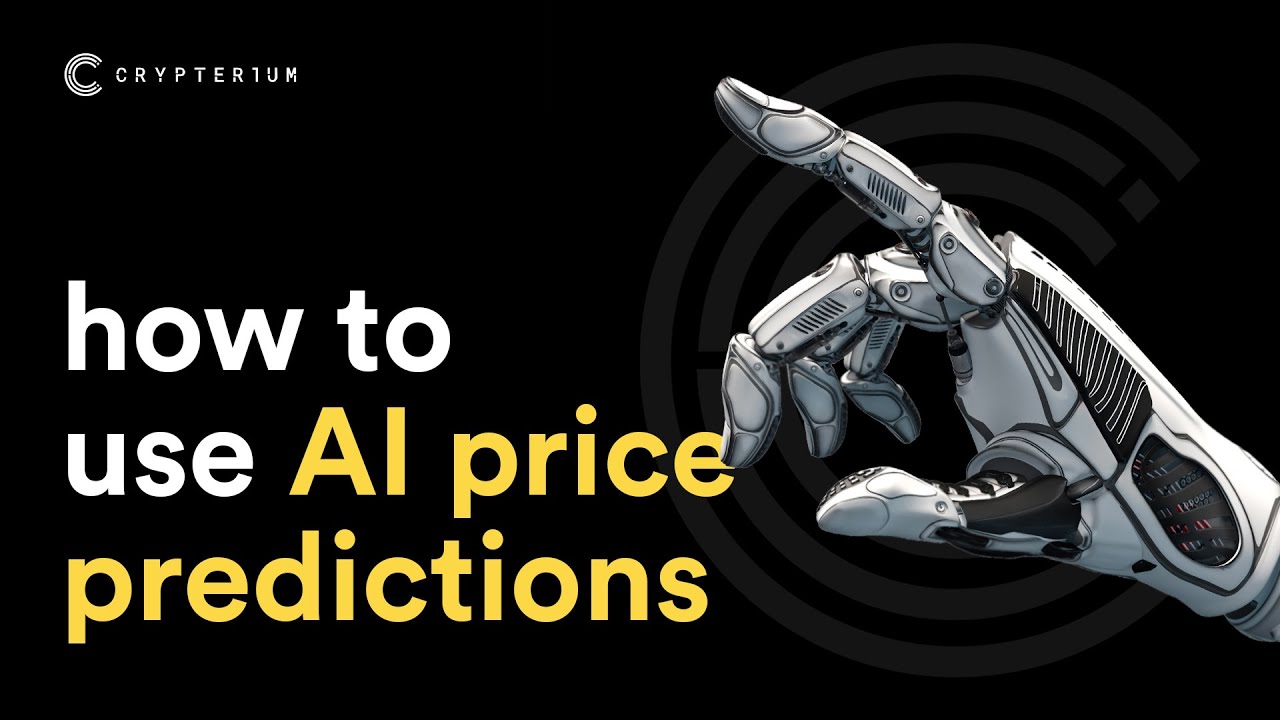Limitations of using AI for cryptocurrency price prediction. – Limitations of using AI for cryptocurrency price prediction are significant and multifaceted. While artificial intelligence offers the allure of precise market forecasting, the inherent volatility and complexity of the cryptocurrency landscape present formidable challenges. This exploration delves into the key limitations, examining data deficiencies, model inadequacies, the influence of external factors, ethical considerations, and the crucial issue of interpretability.
Understanding these constraints is paramount for anyone considering AI-driven strategies in the crypto market.
The unpredictable nature of cryptocurrency prices, coupled with the lack of readily available, reliable historical data, significantly hinders the accuracy of AI prediction models. Furthermore, external factors such as regulatory changes, market manipulation, and social media sentiment introduce significant noise and unpredictability, making accurate forecasting extremely difficult. Even advanced AI architectures struggle to account for these complexities, highlighting the inherent limitations of relying solely on AI for cryptocurrency price prediction.
Data Limitations
Predicting cryptocurrency prices using AI faces significant hurdles stemming from the inherent limitations of the available data. The volatile and unpredictable nature of cryptocurrency markets, coupled with challenges in data acquisition and inherent biases, significantly impacts the accuracy and reliability of AI prediction models.The inherent volatility and unpredictability of cryptocurrency markets pose a substantial challenge. Unlike traditional asset classes with established historical patterns, cryptocurrency markets are frequently subject to dramatic price swings driven by factors such as regulatory changes, technological advancements, market sentiment, and even social media trends.
These unpredictable events make it exceedingly difficult for AI models, which rely on historical data patterns, to accurately forecast future price movements. For instance, a sudden announcement by a major regulatory body could drastically alter the price of a cryptocurrency overnight, rendering any prior AI prediction obsolete.
Challenges in Obtaining Accurate and Comprehensive Historical Cryptocurrency Data
Acquiring accurate and comprehensive historical cryptocurrency data is a complex process. Many exchanges operate with varying levels of data transparency, and data quality can differ significantly across platforms. Furthermore, the relatively young age of the cryptocurrency market means that the available historical data is limited compared to more established markets, restricting the ability of AI models to learn from a wide range of market conditions.
Inconsistent data formatting, missing data points, and the presence of erroneous or manipulated data further compound the problem. This lack of comprehensive and reliable historical data directly impacts the training and performance of AI prediction models. For example, a model trained on incomplete data might fail to identify subtle patterns or correlations that would otherwise improve its predictive power.
Data Biases in Cryptocurrency Price Prediction Models
Various biases can significantly skew AI prediction models. Selection bias can occur if the training data is not representative of the entire market. For example, a model trained primarily on data from a single exchange might not accurately reflect the overall market sentiment. Survivorship bias, where only successful cryptocurrencies are included in the dataset, can lead to overly optimistic predictions.
Similarly, reporting bias, where some price fluctuations are not accurately reported, can introduce errors into the model. These biases, if not carefully addressed, can lead to inaccurate and unreliable predictions. Consider a model trained solely on data from bull markets; it would likely overestimate future price growth during periods of market correction.
Impact of Limited Data on Model Training and Accuracy
Limited data significantly impacts the training and accuracy of AI models. With insufficient data, models may struggle to identify complex relationships between variables and may overfit to the training data, performing poorly on unseen data. This is particularly problematic in the volatile cryptocurrency market, where even small variations in data can significantly impact the model’s predictions. The consequence is often unreliable predictions that are not generalizable to real-world market conditions.
Models trained on limited data might, for example, accurately predict prices within a narrow range of conditions, but fail completely outside of that range.
Data Availability Across Cryptocurrencies
| Cryptocurrency | Historical Price Data Availability | Trading Volume Data Availability | On-Chain Data Availability |
|---|---|---|---|
| Bitcoin (BTC) | Extensive, readily available from multiple sources | Extensive, readily available from multiple sources | Extensive, publicly available through blockchain explorers |
| Ethereum (ETH) | Extensive, readily available from multiple sources | Extensive, readily available from multiple sources | Extensive, publicly available through blockchain explorers |
| Solana (SOL) | Good, available from major exchanges | Good, available from major exchanges | Good, publicly available through blockchain explorers |
| Newly Launched Altcoin (Example) | Limited, potentially only available from a single exchange | Limited, potentially only available from a single exchange | Potentially limited or unavailable |
Model Limitations: Limitations Of Using AI For Cryptocurrency Price Prediction.

AI models, while powerful, face inherent limitations when applied to the volatile and complex world of cryptocurrency price prediction. Their effectiveness is heavily dependent on the architecture chosen, the quality of the training data, and the ability to account for the myriad of factors influencing cryptocurrency markets. Understanding these limitations is crucial for managing expectations and avoiding overreliance on AI-driven predictions.The choice of AI model architecture significantly impacts predictive accuracy.
Recurrent Neural Networks (RNNs), particularly Long Short-Term Memory (LSTMs) networks, are frequently employed due to their ability to handle sequential data like time series price information. However, even these advanced architectures struggle with the inherent noise and non-stationarity of cryptocurrency data. RNNs, for example, can be computationally expensive to train, particularly with large datasets, and their performance can be sensitive to hyperparameter tuning.
Furthermore, their effectiveness diminishes when dealing with long-term predictions, as the complexity of the market makes long-range forecasting extremely challenging.
Recurrent Neural Network (RNN) and LSTM Limitations in Cryptocurrency Price Prediction
RNNs and LSTMs, while capable of processing sequential data, face challenges with the high dimensionality and volatility of cryptocurrency markets. The complex interplay of technical indicators, market sentiment, regulatory changes, and technological advancements makes it difficult for these models to capture the full picture. For instance, an LSTM might successfully predict short-term price fluctuations based on recent trends, but it would likely struggle to anticipate a major market correction triggered by unforeseen regulatory action.
The vanishing gradient problem, a common issue in training deep RNNs, further complicates the process, hindering the model’s ability to learn long-term dependencies within the data. Overfitting, where the model performs well on training data but poorly on unseen data, is also a significant concern.
Overfitting and Underfitting in Cryptocurrency AI Models
Overfitting occurs when a model learns the training data too well, including its noise and outliers, resulting in poor generalization to new, unseen data. This is particularly problematic with cryptocurrency data, which is often noisy and contains numerous outliers due to market manipulation, pump-and-dump schemes, and unexpected events. Underfitting, on the other hand, happens when the model is too simplistic to capture the underlying patterns in the data.
This can lead to poor predictive performance regardless of the data’s characteristics. The optimal model complexity lies in finding a balance between these two extremes, a challenging task in the context of cryptocurrency price prediction. For example, a model with too many layers (overfitting) might perfectly predict past prices but fail to predict future ones accurately. Conversely, a model with too few layers (underfitting) may fail to capture any meaningful patterns at all.
Comparative Performance of Different AI Models for Cryptocurrency Price Prediction
Various AI models have been employed for cryptocurrency price prediction, including Support Vector Machines (SVMs), Random Forests, and Artificial Neural Networks (ANNs) beyond RNNs and LSTMs. Direct comparisons are difficult due to variations in datasets, evaluation metrics, and model hyperparameters. However, studies suggest that ensemble methods, which combine multiple models, often outperform individual models. While some studies have reported high accuracy rates using specific models, these results are often not reproducible across different datasets or time periods, highlighting the instability of the problem.
For instance, a model performing well on Bitcoin data in 2020 might show drastically reduced accuracy when applied to Ethereum data in 2023.
Incorporating External Factors into AI Prediction Models
A major limitation of many AI models is the difficulty of incorporating external factors, such as news sentiment, regulatory announcements, and technological developments, into the prediction process. While some models attempt to integrate news data through sentiment analysis, the subjectivity and ambiguity of natural language processing make this a challenging task. Furthermore, the impact of these external factors is often unpredictable and can significantly alter market dynamics.
For example, a positive news report about a particular cryptocurrency might lead to a short-term price surge, but a subsequent regulatory crackdown could negate this effect. Effectively incorporating such multifaceted information remains a significant research challenge.
Hypothetical Experiment: AI vs. Statistical Model
A hypothetical experiment could compare the predictive accuracy of a sophisticated LSTM model against a simpler moving average model. Both models would be trained on historical cryptocurrency price data (e.g., Bitcoin’s daily closing prices over the past five years). The LSTM model would attempt to learn complex patterns and dependencies in the data, while the moving average model would simply predict future prices based on the average of past prices.
The performance of both models could be evaluated using metrics like Mean Absolute Error (MAE) and Root Mean Squared Error (RMSE) on a separate test dataset. This experiment would help quantify the added value of a complex AI model compared to a more straightforward statistical approach, highlighting the potential limitations of AI in scenarios where simpler models might suffice.
Market Manipulation and External Factors

AI’s predictive capabilities in the volatile cryptocurrency market are significantly hampered by the inherent susceptibility of the market to manipulation and the unpredictable nature of external events. These factors introduce noise and unpredictability that even the most sophisticated algorithms struggle to account for, leading to inaccurate and unreliable price predictions. The complexity of these influences necessitates a nuanced understanding of their impact on AI model performance.The accuracy of AI price predictions is profoundly affected by market manipulation.
Malicious actors can artificially inflate or deflate prices through coordinated buying or selling, creating false signals that mislead AI models trained on historical data. These manipulative actions distort the underlying market dynamics, leading the AI to learn inaccurate patterns and generate flawed predictions. For example, wash trading, where an entity buys and sells the same cryptocurrency to create artificial volume, can fool algorithms into perceiving increased demand, resulting in inflated price predictions.
Impact of Market Manipulation on AI Predictions
Sophisticated manipulation techniques can easily bypass simpler AI models. For instance, a coordinated effort to manipulate trading volume and price action can generate patterns that an AI might interpret as a strong bullish or bearish signal, leading to inaccurate predictions. Moreover, the use of bots and automated trading strategies further complicates the picture, creating unpredictable market behavior that is difficult for AI to model effectively.
The sheer volume and velocity of transactions generated by these automated systems can overwhelm AI models, making accurate predictions extremely challenging.
Influence of Unforeseen Events on Cryptocurrency Prices and AI Models
Unforeseen events, such as regulatory changes, security breaches (hacks), and significant technological advancements, can dramatically impact cryptocurrency prices, often in unpredictable ways. These events introduce significant volatility and introduce data points that deviate substantially from historical patterns, rendering AI models trained on past data less effective. For example, a sudden regulatory crackdown on a specific cryptocurrency could cause a sharp price drop, contradicting any positive prediction an AI model might have generated based on previous trends.
Challenges in Predicting Social Media Sentiment’s Impact on Cryptocurrency Prices
Predicting the impact of social media sentiment on cryptocurrency prices presents a significant challenge for AI. While sentiment analysis can be incorporated into AI models, the complexity and nuances of online discourse make accurate interpretation difficult. The sheer volume of data, the presence of misinformation, and the rapid evolution of trends make it challenging to accurately gauge the collective sentiment and its subsequent impact on price.
A positive tweet from an influential figure might cause a temporary price surge, but the effect is often short-lived and difficult to quantify reliably, leading to inaccuracies in AI predictions.
Examples of External Factors Rendering AI Price Predictions Unreliable
The 2021 collapse of the Terra Luna cryptocurrency serves as a prime example. While some AI models might have identified bullish indicators prior to the collapse, the unforeseen algorithmic instability and subsequent market panic completely invalidated these predictions. Similarly, unexpected regulatory announcements or large-scale hacks can cause abrupt and significant price movements, rendering AI predictions based on past data entirely inaccurate.
The FTX collapse in 2022, triggered by revelations of mismanagement and fraud, similarly highlighted the vulnerability of AI predictions to unforeseen external events.
Scenario: News Event Invalidating an AI Prediction
Imagine an AI model predicts a steady increase in Bitcoin’s price based on historical trends and current market indicators. However, a major global financial crisis erupts, causing investors to flee riskier assets, including cryptocurrencies. This unexpected event, entirely outside the scope of the AI’s training data, would lead to a sharp drop in Bitcoin’s price, directly contradicting the AI’s prediction.
The model’s accuracy would be severely compromised because it failed to account for the systemic risk introduced by the global financial crisis.
Ethical Considerations

The application of AI in cryptocurrency price prediction raises significant ethical concerns, extending beyond the technical limitations. The potential for misuse and unintended consequences necessitates a careful examination of the moral implications involved, particularly regarding market stability, fair trading practices, and the potential for manipulation. Ignoring these ethical dimensions could lead to severe repercussions for both individual investors and the cryptocurrency market as a whole.AI-driven price prediction’s impact on market volatility is a key ethical concern.
Exacerbated Market Volatility
AI algorithms, particularly those used in high-frequency trading, can amplify existing market volatility. The speed and scale at which these algorithms can execute trades based on predicted price movements can create a feedback loop, where predictions influence market behavior, which in turn affects the accuracy of future predictions. This can lead to rapid price swings, flash crashes, and increased market instability, potentially harming less sophisticated investors who lack the resources to react quickly to these rapid changes.
For example, a sudden surge in sell orders triggered by an AI prediction could cascade into a broader sell-off, even if the initial prediction was based on flawed data or an incomplete understanding of market dynamics. This creates a risk of significant financial losses for those caught unprepared.
Risks of AI Predictions in Algorithmic Trading
The use of AI predictions for high-frequency trading and algorithmic trading presents substantial ethical risks. These automated trading systems, driven by AI, can operate at speeds far exceeding human capabilities, leading to increased market instability and the potential for unfair advantages. The opaque nature of many AI algorithms further compounds the problem, making it difficult to understand the rationale behind their trading decisions and to identify potential biases or flaws that could lead to market manipulation.
The “black box” nature of some AI systems means that regulators and market participants alike may lack the transparency needed to assess their impact and mitigate potential risks. A case in point would be a scenario where an AI algorithm detects a minor price fluctuation and interprets it as a significant trend, leading to a large-scale sell-off that is disproportionate to the actual market conditions.
Ethical Implications of AI-Driven Market Manipulation
The potential for using AI to manipulate cryptocurrency markets raises serious ethical questions. Sophisticated AI algorithms could be employed to create artificial price movements, spread misinformation, or exploit market inefficiencies for personal gain. This could involve coordinating multiple accounts to execute trades based on AI-generated predictions, artificially inflating or deflating prices to benefit certain traders at the expense of others.
Such actions undermine the integrity of the market and erode investor confidence. A hypothetical scenario could involve an AI system identifying a vulnerability in a specific cryptocurrency exchange’s security protocols, allowing it to manipulate trades and generate profits through illicit means. This would be unethical, and potentially illegal, depending on the jurisdiction.
Potential Ethical Guidelines for Responsible AI Use in Cryptocurrency Trading, Limitations of using AI for cryptocurrency price prediction.
Establishing clear ethical guidelines is crucial for the responsible use of AI in cryptocurrency trading. These guidelines should focus on transparency, accountability, and fairness.
The following points represent potential ethical guidelines:
- Transparency: AI algorithms used in trading should be auditable and their decision-making processes understandable to regulators and market participants.
- Accountability: Clear lines of responsibility should be established for the actions of AI-driven trading systems, ensuring that individuals or organizations can be held accountable for any harm caused.
- Fairness: AI systems should be designed to avoid bias and ensure fair access to market opportunities for all participants, preventing the creation of unfair advantages for certain traders.
- Data Security: Robust security measures should be implemented to protect sensitive data used by AI algorithms, preventing unauthorized access and manipulation.
- Risk Management: AI systems should incorporate robust risk management strategies to mitigate potential losses and prevent unintended consequences.
Hypothetical Case Study: Ethical Dilemmas in AI-Driven Price Prediction
Imagine a hedge fund employing a sophisticated AI system for cryptocurrency price prediction. The AI accurately predicts a significant price drop in a specific cryptocurrency. The fund could choose to profit from this information by selling its holdings before the price plummets, potentially triggering the very price drop the AI predicted. This creates an ethical dilemma: while the fund is acting rationally in its self-interest, its actions could negatively impact other investors who lack access to similar AI-powered predictive capabilities.
The fund’s decision to act on its AI’s prediction, potentially exacerbating the market downturn, highlights the tension between individual profit maximization and the broader well-being of the cryptocurrency market. This scenario underscores the need for ethical considerations and regulatory oversight in the application of AI to cryptocurrency trading.
Interpretability and Explainability

The inherent complexity of many AI models used for cryptocurrency price prediction presents a significant challenge: understanding how these models arrive at their conclusions. Unlike simpler models whose decision-making processes are easily traceable, sophisticated deep learning algorithms often operate as “black boxes,” obscuring the rationale behind their predictions. This lack of transparency raises concerns about trust, reliability, and the potential for unforeseen errors.The opacity of some AI algorithms used in cryptocurrency price prediction stems from their intricate architecture and the vast amount of data they process.
For example, a recurrent neural network (RNN) trained on historical cryptocurrency data might identify complex patterns and relationships invisible to human analysts. However, explainingwhy* the RNN predicts a specific price movement can be extremely difficult, even for the developers who created the model. This lack of transparency can hinder the adoption and practical application of these powerful tools.
Challenges in Interpreting AI Predictions
Interpreting the predictions of complex AI models, particularly deep learning models like RNNs and Long Short-Term Memory (LSTM) networks, often proves difficult. These models learn intricate patterns from vast datasets, but the resulting decision-making process is not easily mapped to human-understandable features. For instance, an AI model might predict a price increase based on a subtle interaction between trading volume, social media sentiment, and blockchain activity, a relationship too complex for a human to easily grasp.
The model might identify highly non-linear relationships between variables that are difficult, if not impossible, to interpret. This lack of interpretability makes it challenging to validate the model’s predictions and identify potential biases or errors.
Lack of Transparency in AI Algorithms
Many AI algorithms used for cryptocurrency price prediction lack transparency, operating as “black boxes” that produce outputs without revealing the underlying reasoning. This is particularly true for deep learning models, where the sheer number of parameters and the complex interactions between them make it nearly impossible to trace the decision-making process. Proprietary algorithms, often used by commercial prediction services, further exacerbate this issue, limiting the ability to scrutinize the model’s internal workings and assess its reliability.
The lack of transparency raises concerns about potential biases embedded within the algorithm and the risk of making trading decisions based on unexplainable predictions.
Importance of Model Explainability for Building Trust and Understanding
Model explainability is crucial for building trust and understanding in AI-driven cryptocurrency price predictions. Without understanding the factors influencing a model’s predictions, users may hesitate to rely on its output for making potentially high-risk trading decisions. Explainable AI (XAI) methods aim to address this issue by providing insights into the model’s internal workings, making it possible to identify biases, assess reliability, and debug potential errors.
Increased transparency builds confidence and allows users to critically evaluate the model’s performance and adjust their strategies accordingly. For instance, if a model consistently overestimates price movements during periods of high market volatility, this insight can be used to refine the model or adjust trading strategies to mitigate the risk.
Methods for Improving Interpretability of AI Models
Several techniques can enhance the interpretability of AI models used for cryptocurrency price prediction. These include using simpler models with inherent transparency, such as linear regression or decision trees. Alternatively, more complex models can be made more interpretable through techniques like SHAP (SHapley Additive exPlanations) values, which quantify the contribution of each input feature to the model’s prediction.
LIME (Local Interpretable Model-agnostic Explanations) provides local explanations by approximating the complex model with a simpler, more interpretable model around a specific prediction. Feature importance analysis, which ranks the importance of various input features in the model’s prediction, can also offer valuable insights. By employing these techniques, the opacity of complex AI models can be partially mitigated, leading to greater understanding and trust.
Consequences of Using a “Black Box” AI Model for Trading Decisions
Relying solely on a “black box” AI model for cryptocurrency trading decisions can have severe consequences. Without understanding the model’s reasoning, traders are essentially making blind bets, potentially leading to significant financial losses. The lack of transparency makes it impossible to identify and mitigate potential biases or errors in the model’s predictions. Furthermore, the inability to explain the model’s behavior can hinder the development of robust risk management strategies.
A poorly understood model can lead to overconfidence, causing traders to take excessive risks and potentially suffer substantial financial setbacks. For example, if a black box model unexpectedly fails during a period of high market volatility, a trader might incur significant losses without understanding why the model’s prediction was inaccurate.
Ending Remarks

In conclusion, while AI holds promise for various applications, its limitations in accurately predicting cryptocurrency prices are undeniable. The inherent volatility of the market, data scarcity, model complexities, external influences, and ethical considerations all contribute to a landscape where AI predictions should be viewed with caution. A balanced approach, combining AI insights with fundamental analysis and risk management, remains crucial for navigating the dynamic world of cryptocurrency investment.

